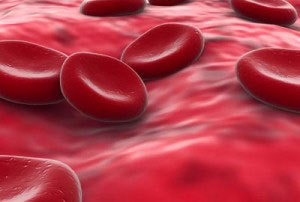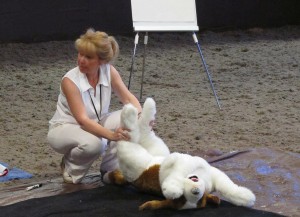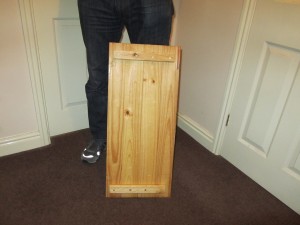After an accident where there has been significant trauma, say like a road traffic collision or fall from a height, or perhaps when our dog has a serious disease or infection, internal bleeding can develop.
When we see blood from a wound, we know instinctively that we need to stop the bleeding as quickly as possible so we apply pressure to the wound and dress it with a bandage. Thats not so easy if the bleeding is INSIDE the dog. You can’t exactly put a plaster on a bleed if you can’t see the wound!
So, what do we do?
Well firstly, you must ask yourself what it is that alerts you to the possibility of an internal bleed? May be we saw the accident happen, or we know our dog has been unwell. This might tip us off to the possibility but what can you as an owner do to detect whether that is actually what is happening?
Signs:
Blood is supposed to travel around the circulatory system feeding oxygen to our organs. If the blood leaves the body, it takes oxygen with it and the animal will start to slide into shock. With internal bleeding, although the blood is not actually leaving the body, it isn’t travelling around the circulatory system as it should be, and hence it is not delivering the oxygen where it is needed.
Signs you might see to alert you to this are:-
|
Early Signs:- Rapid Heart Beat Anxious / Agitated Bright Red Gums Shallow Breathing Pulse Easy to Find |
Secondary Signs:- Increased Heart Beat Gums Pale or Blue Lethargy and Weakness Breathing more shallow Pulse Difficult to Find |
Late Signs:- Gums White / Mottled Heart Rate Increases Weak Pulse Glazed Eyes / Not Focussing Coma Heart Attack Death |
Apart from the above signs, the key and most obvious sign as to whether or not your dog has internal bleeding might be that it is possible to detect the bleeding, just by feeling his tummy/abdomen with the flat of your hand.
Gently place your palm on his tummy and bounce it. Don’t take your hand off in between presses, don’t poke him with your fingers and don’t slap his tummy – just “bounce” your hand gently 3-4 times and see what it feels like.
A normal tummy should feel soft and squidgey (you can feel your own tummy when you are lying down and relaxed to see how it should feel – whether you’ve “eaten all the pies” or whether you’ve been down to the gym every night for six months, your tummy should be soft). It should have the texture of a raw steak.
If, when you bounce your hand on the tummy, it feels hard and tight and doesn’t squidge much under your palm, then this can often indicate internal bleeding within the abdomen. As the blood fills the space, the tummy swells and doesnt feel so soft. This has more the texture of an over-cooked or “well-done” steak. This was, in fact, the deciding factor for me personally when I had to make the decision to take my Labrador to be put to sleep following an illness in her old age :0(
Obviously, we cannot bandage the inside of a dog so we need to act fast. The first thing to do is to put him in the correct position for treating shock. Although we cannot stop the bleeding, we can mimimise the effect that the blood loss will have on the dog.
IT IS VITAL TO GET YOUR DOG TO A VET
Remember to ‘phone the vet immediately and tell him what you suspect BEFORE you set off to the clinic. The dog MUST be seen as an emergency. This CANNOT wait.
Temporary Treatment:
1) Quickly lay him on his back
2) Manually hold his back legs up in the air to get the oxygenated blood to his brain ASAP.
Shock Stabilisation Treatment:
1) Find a board strong enough to take his weight and lay him on it.
The board I found which would be suitable for treating my big Ridgebacks in such a situation turned out to be the lid off my son’s toy box!
N.B. Always lie him on right hand side in case his shock deteriorates and requires CPR.
2) Wrap him in a blanket/towel, securing him to the board with it.
3) Place cushion/rolled up jacket and put under the board, directly under his hind legs.
4) Tilt him sufficiently for the blood to be encouraged to flow toward his brain.
5) Phone your vet ASAP to meet you at the surgery.
6) The board will act like a stretcher for carrying him to and from the car & it will allow you to tilt his body sufficiently to aid the blood flow to his head.
(N.B. Without the board, his body would just sag in the middle and not be physically tilted)




